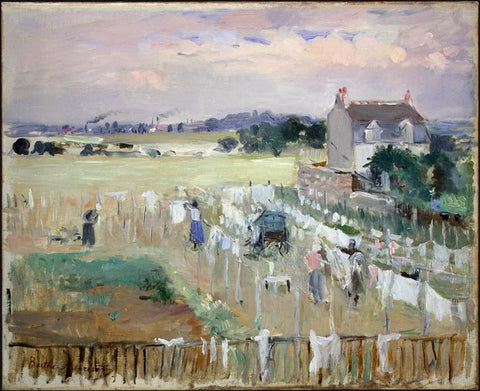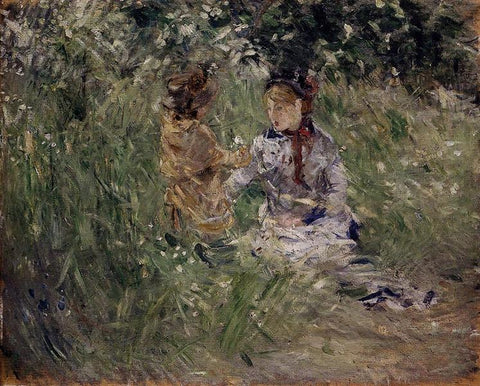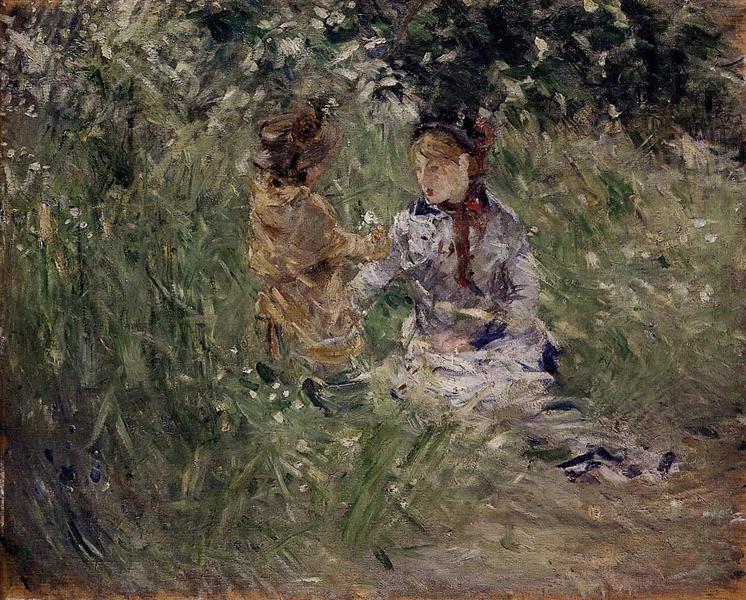Berthe Morisot (1841–1895) stands as a figure in the history of Impressionism, not only for her pioneering role as a female artist in a predominantly male artistic movement but also for her distinctive approach to painting that has captivated art lovers for generations. As the only woman to exhibit in the first Impressionist exhibition in 1874, Morisot's contributions to the movement were both groundbreaking and influential. Her work is celebrated for its loose, bold brushstrokes and expressivity, capturing the fleeting moments of everyday life with a sensitivity and insight that remain unparalleled. Here, we explore five of her most celebrated artworks, which together encapsulate the essence of her remarkable contribution to Impressionism.

1. The Cradle (1872)
"The Cradle" is one of Morisot's most iconic works, showcasing her ability to capture intimate moments with great tenderness and depth. The painting depicts Morisot's sister, Edma, gazing lovingly at her sleeping daughter. The use of light and shadow, combined with the delicate brushwork, creates a sense of warmth and tranquility. This masterpiece is often cited as a prime example of Morisot's focus on female domestic life and her skill in portraying the emotional bonds between mothers and their children.

2. Summer's Day (1879)
In "Summer's Day," Morisot transports the viewer to a serene moment by a lake, where two women are leisurely enjoying a boat ride. The painting is a masterclass in capturing the play of light on water and the fluidity of reflections, achieved through Morisot's signature loose brushstrokes. The sense of spontaneity and the fleeting nature of the scene are quintessentially Impressionist, showcasing Morisot's adeptness at encapsulating the essence of a moment.

3. Woman at Her Toilette (1875-1880)
"Woman at Her Toilette" is a striking example of Morisot's exploration of the female form and her interest in the private, everyday rituals of women. The painting features a woman in her boudoir, surrounded by an array of toiletries. Morisot's use of light and texture, with the mirror reflections adding depth and complexity, reveals her innovative approach to composition and her ability to convey a sense of intimacy and immediacy.

4. Hanging the Laundry out to Dry (1875)
This painting is a vivid portrayal of domestic life, capturing a woman hanging laundry in an outdoor setting. Morisot's treatment of the subject matter, a mundane chore, elevates it to a moment worth observing, highlighting her interest in the lives of women and the beauty of everyday tasks. The dynamic composition and vibrant colors reflect the movement and the outdoor light, demonstrating Morisot's skill in depicting scenes of daily life with vibrancy and elegance.

5. The Garden at Bougival (1884)
"The Garden at Bougival" is considered one of Morisot's masterpieces, showcasing her mature style and her interest in landscape painting. The work depicts a woman and a child in a lush garden, with Morisot's use of color and light bringing the scene to life. The painting is notable for its loose brushwork and the sense of spontaneity and movement it conveys, embodying the Impressionist fascination with capturing the natural world.
Berthe Morisot's artworks are a testament to her pioneering spirit and her profound impact on the Impressionist movement. Through her focus on female subjects, domestic scenes, and the beauty of the everyday, Morisot offered a unique perspective within the Impressionist canon, challenging traditional notions of art and femininity. Her legacy continues to inspire and captivate, affirming her place as one of the most important and innovative artists of her time.
